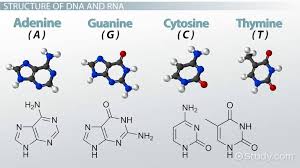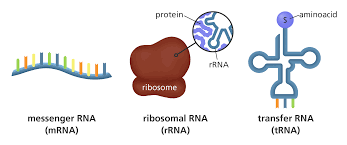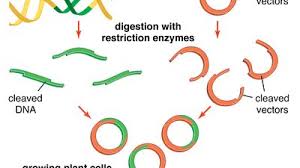Heredity is the process of transmitting biological traits from parent to offspring through genes, the basic units of heredity. Heredity also refers to the inherited characteristics of an individual, including traits such as height, eye colour, and blood type.
The hereditary materials in living organisms are nucleic acids. Nucleic acids are polymers of nucleotides. They are involved in the transmission of character or trait in living organisms.
Read Also: Goat Milk Production Complete Guide
Nucleic Acids as the Chemical Basis of Heredity in Living Organisms

Nucleic acids are not protein and are the hereditary material in living organisms. There are two types of nucleic acids involved in the transmissions of character or trait in living organisms.
They are the DNA (deoxyribose nucleic acid) and RNA (ribose nucleic acid). Fig. 1 shows the structure of ribose and deoxyribose sugar. Generally, the DNA is endowed with the capacity to transmit genetic information from one generation to another. However, when DNA is not present (as in some viruses), RNA assumes this role.
Composition of Nucleic Acids in Agricultural Organisms
Nucleic acids are polymers of nucleotides. Each nucleotide is composed of a nucleotide base, a five carbon sugar and phosphoric acid. The nucleotide of DNA is known as deoxyribonucleotides or deoxyribotides, while those of RNA are known as ribonucleotides or ribotides.
The sugar of DNA is deoxyribose sugar whereas that of RNA is ribose sugar. RNA has one hydrolyl group (- OH) attached to its second carbon atom whereas DNA has only one hydrogen atom attached to its second carbon atom.
DNA and RNA Bases in Agricultural Genetics
DNA has four bases: adenine, thymine, guanine and cytosine. Adenine and thymine are purines, whereas guanine and cytosine are pyrimidines. The structure of purine and pyrimidine bases of nucleic acid is presented.
RNA on the other hand, has uracil instead of thymine, while the other three bases are the same as in DNA.
1. Structure of DNA in Agricultural Species
DNA molecule according to Waston and Crick (1953) has two long anti-parallel polynucleotide chains, helically coiled around the same axis. The right-handed helices are held together by their bases which are paired together by covalent hydrogen bonds.
Purine polynucleotide chain pairs with pyrimidine of the other – adenine with thymine and guanine with cytosine.
2. Structure of RNA and Its Role in Agricultural Organisms

RNA is a polynucleotide chain of ribonucleotides. The RNA counterpart of thymine is uracil. Thymine of DNA is the 5-methyl derivative of uracil of RNA. See structure below:
Read Also: Worm Infestation on Ruminant Animals: Symptoms and Treatment
Types of RNA in Agricultural Cells
There are three types of RNA found in cells. These are:
1. Ribosomal RNA (rRNA): It is stable and is a major component of ribosomes. It is the most abundant RNA (80 percent) in the cells.
2. Messenger RNA (mRNA): It is usually short-lived and functions as the carrier of genetic information from DNA to proteins. It is about 10 percent of the total cell RNA.
3. Transfer or soluble RNA (tRNA): It is stable and acts as the amino acid receptor and carries amino acid from the pool to the site of protein synthesis. It represents about 10–15 percent of the total cell RNA.
Heredity accounts for why offspring look like their parents: when two dogs mate, for example, they have puppies, not kittens. If the parents are both Chihuahuas, the puppies will also be Chihuahuas, not great Danes or Labrador retrievers.
The puppies may be a little taller or shorter, a little lighter or a lot heavier than their parents are. Their faces may look a little different, or they may have different talents and temperaments.
In all the important characteristics, however the number of limbs, arrangement of organs, general size, fur type they will share the traits of their parents.
The principles of heredity hold true not only for a puppy but also for a virus, a roundworm, a pansy, or a human. Nucleic acids are the hereditary materials found in the cells of the living organism and are responsible for the transmission of characters and traits.
Do you have any questions, suggestions, or contributions? If so, please feel free to use the comment box below to share your thoughts. We also encourage you to kindly share this information with others who might benefit from it. Since we can’t reach everyone at once, we truly appreciate your help in spreading the word. Thank you so much for your support and for sharing!

